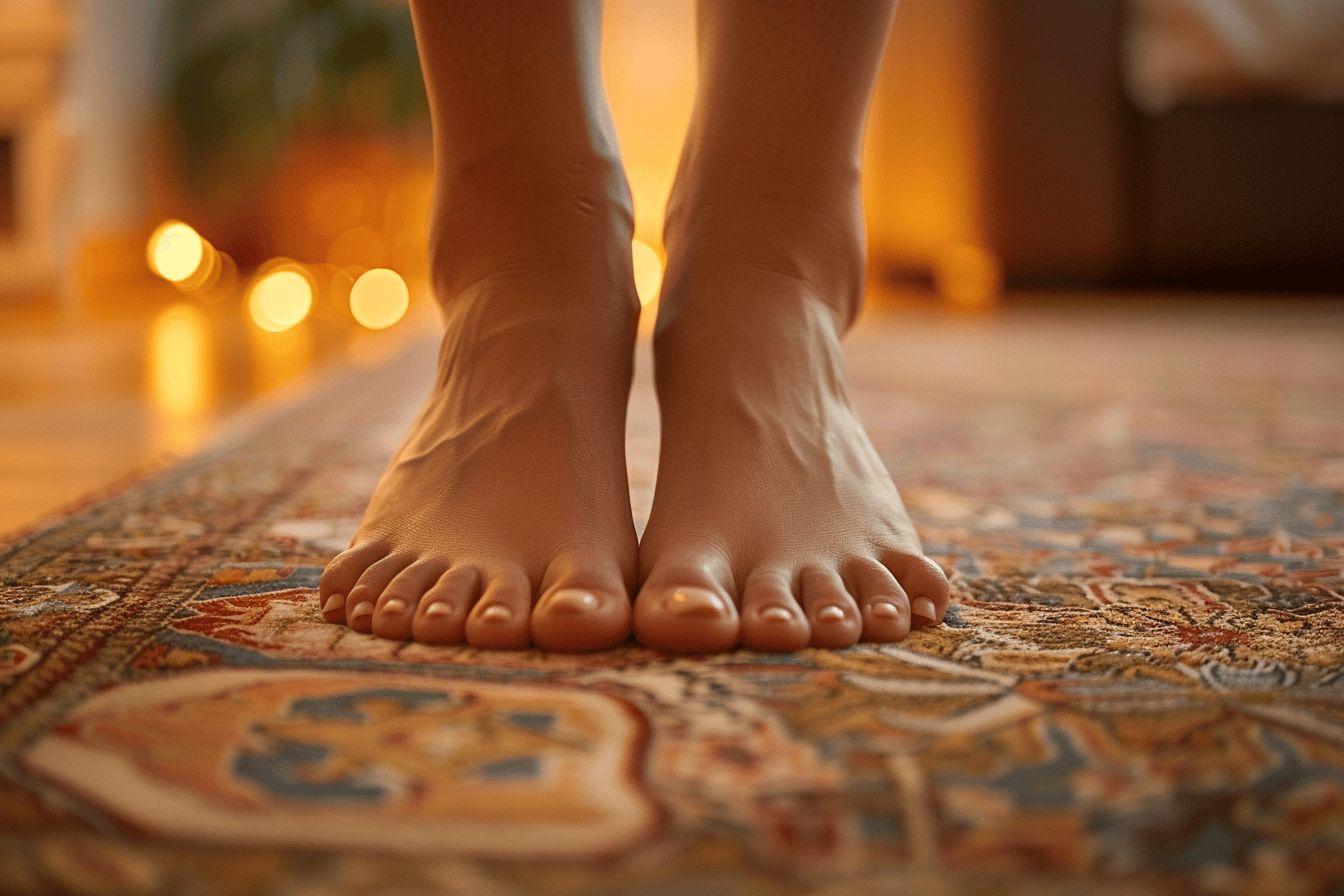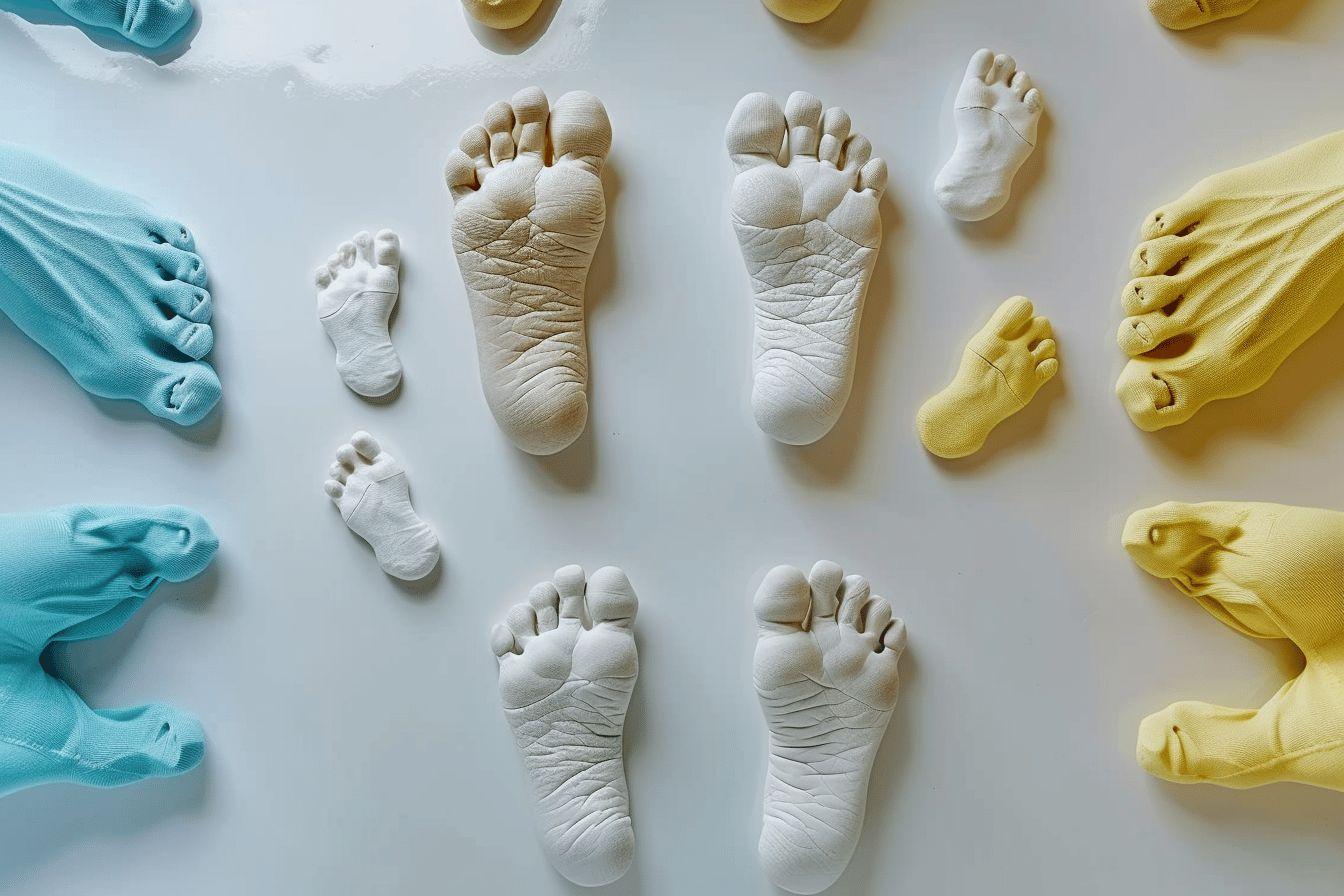Summary
Understanding your foot arch type impacts comfort, performance, and injury prevention for proper movement foundation.
- Three main arch types exist : neutral (balanced weight distribution), flat feet (complete ground contact), and high arches (exaggerated height).
- Identify your arch using the wet test method by examining your footprint on paper.
- Choose footwear specifically for your arch type - stability for flat feet, cushioning for high arches, and balanced support for neutral arches.
- Manage foot health through regular stretching, appropriate orthotics, and maintaining healthy weight.
Your feet are the foundation of your body's movement, yet many people remain unaware of their unique foot type. Understanding your foot arch can significantly impact your comfort, athletic performance, and even prevent injuries. From flat feet to high arches, each type requires specific care and appropriate footwear.
Different types of foot arches and their characteristics
Foot arches are natural structural components that provide support and flexibility during movement. There are three main foot arch types that categorize how your foot distributes weight and absorbs impact when walking or running.
The most common foot type is the neutral or normal arch. If you have this foot type, your footprint shows a moderate curve along the inside of your foot. Neutral arches distribute weight evenly across your foot, providing natural shock absorption. People with neutral arches typically don't experience major foot problems unless subjected to excessive strain or improper footwear.
Next, we have flat feet or low arches. This condition, also known as pes planus, occurs when the arch of your foot makes complete or near-complete contact with the ground. Flat feet often result from underdeveloped arches during childhood or collapsed arches due to age, injury, or excessive weight. Many individuals with flat feet experience signs and symptoms of plantar fasciitis including heel pain and fatigue after standing for extended periods.
The third type is high arches or cavus foot. This less common foot type features an exaggerated arch height, creating a very distinct curve in your footprint. High arches place excessive pressure on the heel and ball of the foot, making them less effective at absorbing shock. This can lead to instability, pain, and conditions like metatarsalgia or stress fractures.
Understanding your foot type isn't just about knowing your arch height—it also involves recognizing how your foot functions during movement. Some feet might pronate (roll inward) or supinate (roll outward) excessively, affecting your gait and potentially leading to discomfort or injury.

How to identify your foot type at home
Determining your foot type doesn't necessarily require a professional assessment. Several simple at-home methods can help you identify your arch type effectively.
The wet test method is perhaps the easiest way to check your foot arch. Simply wet the bottom of your foot, then step onto a piece of paper or a dark surface where your footprint will be visible. Examine the imprint:
- If you see nearly your entire foot, you likely have flat feet
- If you see a distinct curve connecting your heel and ball of foot, you have a neutral arch
- If you see only a thin connection or complete separation between heel and forefoot, you have high arches
Another technique is the wear pattern analysis. Examine the soles of your well-worn shoes. Excessive wear on the inner side indicates overpronation, typically associated with flat feet. Wear concentrated on the outer edges suggests supination, common with high arches. Even wear across the sole usually means you have neutral arches with a balanced gait.
For a more detailed analysis, consider the sitting versus standing test. While seated with feet flat on the floor, note if you can see an arch. Then stand up and see if that arch disappears or remains prominent. Arches that disappear when standing often indicate flexible flat feet, while those that remain high might suggest rigid high arches.
If you're experiencing chronic foot pain or suspect serious foot issues, these home tests should be supplemented with a professional evaluation. Podiatrists use advanced techniques like gait analysis and pressure mapping to provide a comprehensive understanding of your foot mechanics.
| Foot Type | Footprint Appearance | Common Issues |
|---|---|---|
| Neutral Arch | Visible curve along inside of foot | Few issues with proper footwear |
| Flat Feet | Full or nearly full footprint | Overpronation, plantar fasciitis, shin splints |
| High Arches | Narrow connection or disconnected heel and forefoot | Supination, ankle instability, metatarsalgia |
Selecting the best footwear for your foot type
Choosing appropriate footwear based on your foot type can significantly enhance comfort and prevent injuries. Each arch type requires specific features to provide optimal support and function.
For neutral arches, you're fortunate to have the widest range of footwear options. Look for shoes with moderate cushioning and support that maintain your natural foot mechanics. Stability shoes work well for everyday use, while neutral running shoes provide balanced cushioning for athletic activities. The key is avoiding extremes—shoes shouldn't be too rigid or too flexible.
If you have flat feet or low arches, prioritize stability and support. Shoes with firm midsoles and motion control features help prevent excessive pronation. Look for models with structured arch support and reinforced heels. For severe cases, treating plantar fasciitis might require specialized footwear with removable insoles to accommodate custom orthotics.
Those with high arches need ample cushioning to compensate for reduced natural shock absorption. Seek shoes with flexible midsoles, extra cushioning, and neutral support. Avoid motion control or stability features that can restrict your foot's natural movement. Cushioned running shoes with neutral support often work well for high-arched individuals.
Beyond arch type, consider the activity-specific requirements for your footwear. Running shoes differ significantly from cross-training shoes or casual everyday footwear. For persistent foot issues, night splints for plantar fasciitis might complement your daytime footwear strategy.
Managing foot problems and enhancing foot health
Beyond selecting appropriate footwear, several strategies can help manage foot problems and promote overall foot health regardless of your arch type.
Regular stretching and strengthening exercises can significantly improve foot function and reduce pain. Toe curls, arch lifts, and calf stretches help maintain flexibility and build supporting muscles. For those recovering from foot conditions, tracking your plantar fasciitis recovery progress can help guide your rehabilitation efforts.
Consider orthotic inserts or custom orthotics for persistent issues. While over-the-counter insoles can provide adequate support for mild cases, custom-made orthotics offer personalized correction for complex foot mechanics. These devices can redistribute pressure, improve alignment, and reduce strain on overworked areas.
Maintaining healthy body weight significantly reduces stress on your feet, particularly beneficial for those with flat feet or high arches who already experience disproportionate pressure distribution. Every extra pound translates to additional force on your feet during walking and standing.
Finally, don't underestimate the importance of proper foot hygiene and regular self-examination. Check your feet frequently for signs of pressure points, irritation, or developing problems. Early intervention often prevents minor issues from becoming serious conditions requiring extensive treatment.




Leave a comment
This site is protected by hCaptcha and the hCaptcha Privacy Policy and Terms of Service apply.